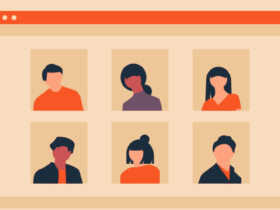The landscape of B2B lead generation in 2026 will look very different from the methods companies relied on even a few years ago. Buyers are more sophisticated, technology is advancing at breakneck speed, and regulatory scrutiny around data privacy is only intensifying. For companies that depend on outbound strategies, staying ahead of these shifts is no longer optional; it’s the difference between growth and stagnation.
In this post, we’ll explore the major trends shaping the future of B2B lead generation in 2026, and how businesses can adapt without losing the human touch that ultimately drives trust and conversions.
AI-Powered Sales Development Representatives (AI SDRs)
Artificial intelligence is no longer just a supporting tool; it’s becoming the engine behind outbound sales development. AI SDRs are already automating tasks like lead sourcing, cold email drafting, and even initial qualification conversations. By 2026, their role will be deeper and more embedded into everyday sales operations.
Strengths of leaning towards AI SDR
- Unmatched efficiency: AI SDRs can handle thousands of outreach sequences simultaneously, ensuring no lead falls through the cracks.
- 24/7 responsiveness: Unlike human reps, AI can instantly respond to queries at any time zone.
- Data-driven accuracy: Machine learning models continuously refine targeting, ensuring higher relevance and conversion rates.
Dangers of leaning towards AI SDR
- Loss of authenticity: Prospects can spot formulaic or robotic messaging, which risks eroding trust.
- Over-reliance on automation: Companies may miss out on deeper relationship building if humans step out too soon.
- Regulatory concerns: Automated outreach must stay compliant with email and data protection laws, or businesses risk penalties.
The most successful businesses in 2026 will balance efficiency with authenticity, pairing AI SDRs with human oversight to maintain credibility. We’ve covered more about how human and AI can co-exist in our post on The Human Element in AI Lead Generation
Scalable Hyper-Personalization through AI
Personalization has always been the holy grail of outbound marketing, but it has been difficult to scale. In 2026, advancements in natural language processing (NLP) and predictive analytics will enable hyper-personalization at scale.
Strengths of using AI for Hyper-Personalization
- Context-aware messaging: AI can analyze a prospect’s online behavior, company updates, and even industry news to craft contextually relevant outreach.
- Multi-channel consistency: Personalization can extend seamlessly across email, LinkedIn, and even chatbot conversations.
- Improved buyer experience: Prospects feel understood, leading to higher engagement and conversion.
Dangers of using AI for Hyper-Personalization
- The “creepy” factor: Overly precise personalization can feel intrusive, especially when prospects aren’t aware of how their data was gathered.
- Template traps: If too many companies use the same AI tools, messaging risks becoming repetitive or predictable.
- Bias in algorithms: AI personalization is only as good as the data it’s trained on, which may introduce blind spots.
Hyper-personalization in 2026 will need clear ethical boundaries. Companies must disclose how data is used while focusing on relevant empathy rather than raw data exploitation. If you’re interested in knowing more about hyper-personalization, we covered some of the psychology that’s involved in our post about Cold Emailing That Works!
Privacy-First Lead Generation
By 2026, data privacy will be the defining constraint and differentiator in B2B lead generation. With stricter global regulations (GDPR, CCPA, and likely newer frameworks), buyers expect businesses to safeguard personal and professional data with transparency.
Why Privacy Matters much More in 2026
- Buyer trust is fragile: With data breaches making headlines, even small missteps can damage reputation.
- Legal risk is higher: Fines and lawsuits are increasing for companies that misuse or mishandle data.
- Competitive edge: Companies that highlight transparent, privacy-first practices can stand out as trustworthy partners.
Safely (And Legally) Navigating Through Data Protection
- Explicit consent-first outreach: Build databases from opt-in sources rather than scraping or buying lists.
- Data minimization: Collect only what is necessary to avoid unnecessary exposure.
- Compliance by design: Use CRM and marketing platforms with built-in compliance features like automatic data deletion and consent tracking.
In the future, companies that treat privacy as a value proposition; not just a legal hurdle, will win more loyal, long-term relationships. If you’re doing outbound cold emailing and wondering about how this trend is going to affect you, you can read more in our post on whether or not Cold Emailing is Ethical!
Conversational AI for Marketing
Conversational AI will be one of the most exciting tools in B2B lead generation in 2026. Instead of static forms or long qualification processes, businesses will deploy AI-powered chatbots and virtual assistants that engage buyers in real-time, on their terms.
Strengths of Using Conversational AI for B2B Marketing
- Real-time lead qualification: Bots can ask intelligent questions to filter prospects before handing them off to human reps.
- Engagement on multiple channels: From websites to messaging apps like WhatsApp or Slack, conversational AI provides seamless touchpoints.
- Scalable human-like experience: Natural language capabilities make conversations feel authentic, reducing friction in early interactions.
Dangers of Using Conversational AI for B2B Marketing
- Impersonal interactions: Poorly trained bots frustrate users, leading to drop-offs instead of conversions.
- Over-automation risks: Businesses that automate too aggressively may alienate prospects seeking genuine human contact.
- Integration complexity: Conversational AI must tie into CRMs, email systems, and analytics tools. Without integration, insights are lost.
The future of conversational AI isn’t to replace human reps, but to enhance first-touch experiences. They filter noise so that sales teams can focus on the most promising leads.
Checklist: How to Prevent the Dangers of Future B2B Lead Generation
Knowledge is power, as they say. Now that you are aware of the trends that will likely become more prominent in the upcoming year, lets touch on how to make the best of it. In the section above, we’ve covered some of the dangers that we need to keep in mind of before we join the wagon of trends in B2B Lead Generation in 2026. Now, lets cover on some ways to prevent or even navigate through those dangers!
AI-Powered SDRs
- ✅ Maintain human oversight: Pair AI with sales reps who review and fine-tune outreach.
- ✅ Audit tone & messaging: Regularly test AI output to avoid robotic or formulaic language.
- ✅ Stay compliant: Configure AI tools to respect unsubscribe requests and email regulations.
Scalable Hyper-Personalization through AI
- ✅ Set ethical limits: Don’t include sensitive personal data in outreach personalization.
- ✅ Avoid “template fatigue”: Rotate multiple personalization frameworks to keep outreach fresh.
- ✅ Audit for bias: Review AI recommendations for gaps or skewed targeting.
Privacy-First Lead Generation
- ✅ Prioritize opt-ins: Build prospect lists through gated content, events, and clear consent.
- ✅ Collect minimal data: Focus on high-value fields (job title, company size, intent signals).
- ✅ Embed compliance tools: Use CRM features for auto-consent tracking and GDPR/CCPA support.
Conversational AI for Marketing
- ✅ Train bots carefully: Use FAQs, buyer objections, and case data to improve accuracy.
- ✅ Set clear escalation rules: Hand off to a human quickly when conversations become complex.
- ✅ Test integrations: Ensure AI syncs properly with CRM and analytics platforms.
Ready and Equipped?
The future of B2B lead generation in 2026 is neither purely human nor purely automated. Instead, it’s about building a hybrid model that leverages technology for scale and efficiency, while preserving human empathy and trust.
AI SDRs, hyper-personalization, privacy-first strategies, and conversational AI will transform how businesses engage prospects. But each trend carries both strengths and risks. The organizations that win in 2026 will not be those that blindly adopt technology, but those that strategically balance automation with authenticity.
The message is clear: the future belongs to businesses that combine smart data, ethical practices, and human connection to generate leads that not only convert; but also endure.
If you find what you are reading so far interesting, why not check us out to read more? We keep up-to-date with the tips, tricks and strategies of B2B Digital Marketing every single week in our blog! Click here to get started!















Leave a Reply